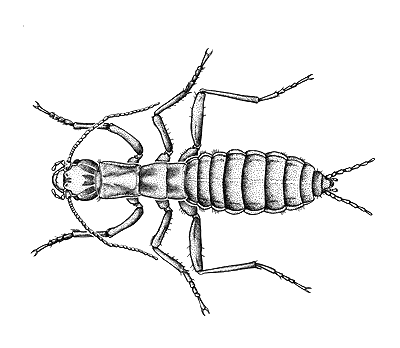 |
Order
- GRYLLOBLATTODEA
(Latin, gryllus = a cricket; Greek, blatta = an insect that
shuns light)
Common Name: rock crawlers
Distribution: Northern Hemisphere
Description
Grylloblattids are restricted to western North America and central to
eastern Asia. The twenty known species are particularly tolerant to cold
climates and high altitude. Adults are soft-bodied, pale, finely haired,
wingless and possess well developed mandibles. The compound eyes are
either absent or reduced in size. Grylloblattids lack organs for the
production or reception of sound. Two long, flexible and segmented
filaments (cerci) project from the apex of the abdomen. An ovipositor
strongly projects from the female's abdomen.
Most species are active by both night and day. Many are found in caves,
snow-melt areas and similarly cool regions.
Nymph
There is no metamorphic cycle of egg-larva-pupa-adult. When juveniles
hatch from the eggs, they resemble small versions of the adults (nymphs).
Through successive moults nymphs reach adult maturity.
Members
Rock crawlers and ice crawlers.
Food
Grylloblattids are scavengers on dead plant or animal material.
Importance
No known economic importance. Their importance is as a component in cave
or alpine ecosystems. |